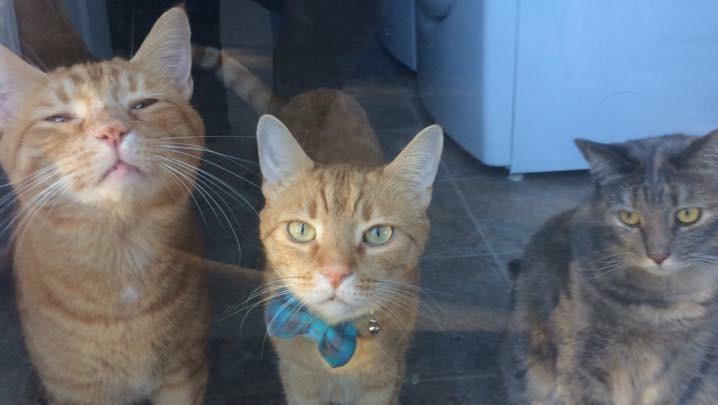EGC: Not So Easy as 1-2-3 Eosinophilic Granuloma Complex in Cats

- posted: Sep. 01, 2019
EGC: Not So Easy as 1-2-3
Eosinophilic Granuloma Complex in Cats
Eosinophilic granuloma complex, or EGC for short, is a complicated and incompletely understood condition that affects cats. EGC is a skin condition and lesions can vary in size and location. What’s an eosinophil? Eosinophils are white blood cells that are often activated when the body is exposed to allergens or parasites.
There are several presentations of EGC: The first is thickening and ulceration of the upper lip known as a “rodent” ulcer. Despite looking rather painful, these lesions are not usually sore or itchy, but they can cause a rather dramatic physical change to the upper lip. The second is a thickened linear plaque that can be pink or yellowish in appearance and often occurs on the inside or back of the hind leg or on the abdomen. Eosinophilic plaques are sometimes itchy. The third is the granuloma which is often more of a raised, round lesion on the skin or sometimes inside the mouth on the tongue or palate. Sometimes, EGC also causes puffiness or swelling of the chin or lower lip. Lesions within the mouth can be quite painful and they sometimes look like tumors, so, biopsy is often recommended for these cases.
EGC is not contagious to other cats. It is an inflammatory condition caused by an inappropriate response by the cat’s immune system to some type of allergen (fleas or mosquitos, pollen, plastics, or foods/proteins) though in some cases, the underlying trigger cannot be identified.
EGC lesions are usually treated with steroids like prednisolone. Some cases may also require antibiotics. Lesions that are unresponsive to steroids or that continue to recur frequently are sometimes treated with other immune-suppressing drugs such as cyclosporine (one common brand is feline Atopica). If the underlying allergen can be identified such as with a food allergy, changing the diet to a hypoallergenic food or otherwise eliminating the allergen can aid in preventing lesions from re-occurring.
EGC lesions are not fatal, but they can sometimes impact a cat’s quality of life and they should always be evaluated to make sure they are EGC lesions and not a more serious type of tumor. Most cats have recurrent lesions, but they can often be controlled with medications and cats can live a relatively normal life with EGC.
If your cat displays any of these signs: swollen upper or lower lip, thickened pink skin on the hind legs or belly or your cat is having trouble eating or swallowing and/or you see an ulcerated area inside the mouth, have her seen by your vet to confirm that the lesions are EGC lesions and to get proper treatment for your cat with steroids or other medications.
This blog brought to you by the Patton Veterinary Hospital serving Red Lion, York and the surrounding communities.
https://veterinarypartner.vin.com/default.aspx?pid=19239&id=4951528
https://dermatologyforanimals.com/faq/Feline-Eosinophilic-Granuloma-Complex.pdf
Location
Patton Veterinary Hospital
425 E Broadway
Red Lion, PA 17356
